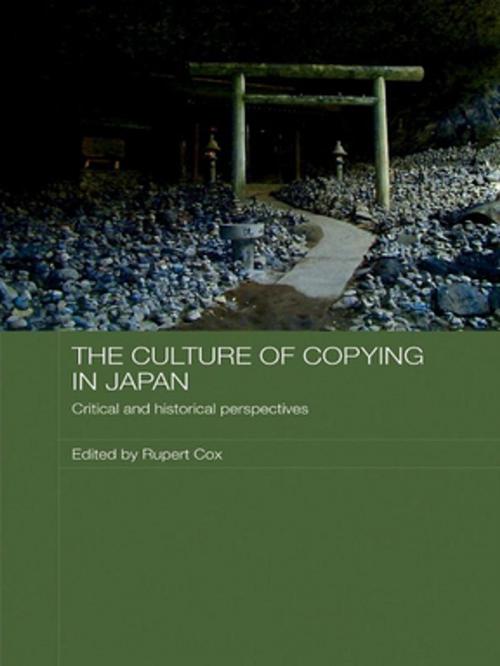The Culture of Copying in Japan
Critical and Historical Perspectives
Nonfiction, Social & Cultural Studies, Social Science, Cultural Studies, Customs & Traditions, Ethnic Studies, Popular Culture| Author: | ISBN: | 9781134397358 | |
| Publisher: | Taylor and Francis | Publication: | September 12, 2007 |
| Imprint: | Routledge | Language: | English |
| Author: | |
| ISBN: | 9781134397358 |
| Publisher: | Taylor and Francis |
| Publication: | September 12, 2007 |
| Imprint: | Routledge |
| Language: | English |
This book challenges the perception of Japan as a ‘copying culture’ through a series of detailed ethnographic and historical case studies.
It addresses a question about why the West has had such a fascination for the adeptness with which the Japanese apparently assimilate all things foreign and at the same time such a fear of their skill at artificially remaking and automating the world around them. Countering the idea of a Japan that deviously or ingenuously copies others, it elucidates the history of creative exchanges with the outside world and the particular myths, philosophies and concepts which are emblematic of the origins and originality of copying in Japan. The volume demonstrates the diversity and creativity of copying in the Japanese context through the translation of a series of otherwise loosely related ideas and concepts into objects, images, texts and practices of reproduction, which include: shamanic theatre, puppetry, tea utensils, Kyoto town houses, architectural models, genres of painting, calligraphy, and poetry, ‘sample’ food displays, and the fashion and car industries.
This book challenges the perception of Japan as a ‘copying culture’ through a series of detailed ethnographic and historical case studies.
It addresses a question about why the West has had such a fascination for the adeptness with which the Japanese apparently assimilate all things foreign and at the same time such a fear of their skill at artificially remaking and automating the world around them. Countering the idea of a Japan that deviously or ingenuously copies others, it elucidates the history of creative exchanges with the outside world and the particular myths, philosophies and concepts which are emblematic of the origins and originality of copying in Japan. The volume demonstrates the diversity and creativity of copying in the Japanese context through the translation of a series of otherwise loosely related ideas and concepts into objects, images, texts and practices of reproduction, which include: shamanic theatre, puppetry, tea utensils, Kyoto town houses, architectural models, genres of painting, calligraphy, and poetry, ‘sample’ food displays, and the fashion and car industries.















